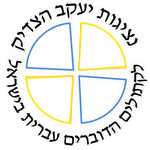Feast of Saint Benedict – July 11

Saint Benedict, born towards the end of the fifth century, in Nursia, north of Rome, is known to us by means of two principal sources: from a part of the Rule for monks that he elaborated, derived from the rich monastic tradition, which was already developed, and from his personal experience, and from book II of the Dialogues of Saint Gregory the Great, where Gregory presents Benedict to us as “a man of God” and a radiant example of sainthood.
“Seeking to please God alone,” Benedict abandoned his studies in Rome and retreated into a grotto at Subiaco where he began to lead a contemplative life, devoted to the search for God. Over time, others in the region discovered him and began to visit him. They brought him provisions for his body and they brought away from there provisions for their hearts from the discussions with him.
Disciples began to attach themselves to him and he founded a first community of monks in the area of Subiaco. Unfortunately, along with his renown, he was also faced with opponents and he was finally forced to leave Subiaco with some of his monks. He settled then, in around 529, on Mount Cassino, south of Rome, where he founded a new monastic community, living in a balance between work and prayer. It was at this time that he began to elaborate his Rule, relying on the monastic rules and the teachings of the Fathers of monasticism with which he was familiar. Until his death, in the middle of the 6th century, he continued to work on “this very little Rule”, written for novices, as he insisted on calling himself.
Eager to make his monastery “a school of the Service of the Lord” for whoever “seeks life and desires happy days”, Benedict gave a central place to the Bible in the life of his monks. “Is there any page, is there any word of divine authority, in the Old Testament or in the New, which is not an absolutely straight rule for the conduct of our lives”. This Rule par excellence forms the life of the monk through the liturgy and the “lectio divina”(a prayerful reading of the Bible). It remains the point of reference wherever men and women, following the way of Benedict, try to adapt the long and rich tradition to their specific and particular context.
A number of communities live according to the Rule of Saint Benedict in the Holy Land today:
The Cistercian monks of Latroun – Read more
The Benedictines of Abu Ghosh – Read more
The Benedictines of the Mount of Olives – Read more
The Benedictines of the Dormition Abbey and Tabgha – Read more
The Melkite Benedictine community of the Immanuel in Bethlehem – Read more
The Rule of Saint Benedict was translated into Hebrew by Gabriel Grossmann (2nd edition, 2005) and some sentences of the first monks, the Fathers of the Desert, were translated into Hebrew by Sister Abraham/Kirsten Stoffregen Pedersen in 1970.












 Feast of Saint Mark – April 25
Feast of Saint Mark – April 25 Year B, Palm Sunday
Year B, Palm Sunday Feast of Saint Joseph - March 19
Feast of Saint Joseph - March 19